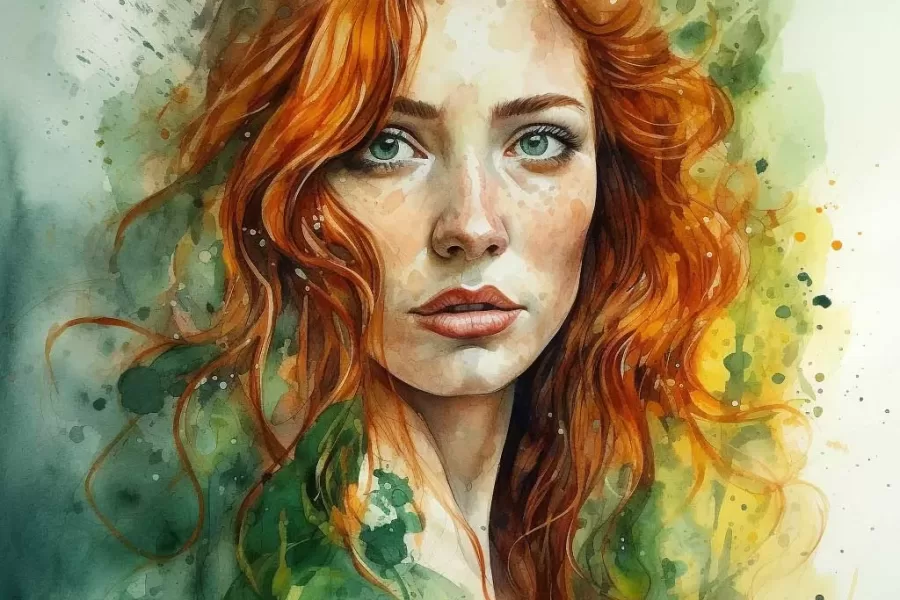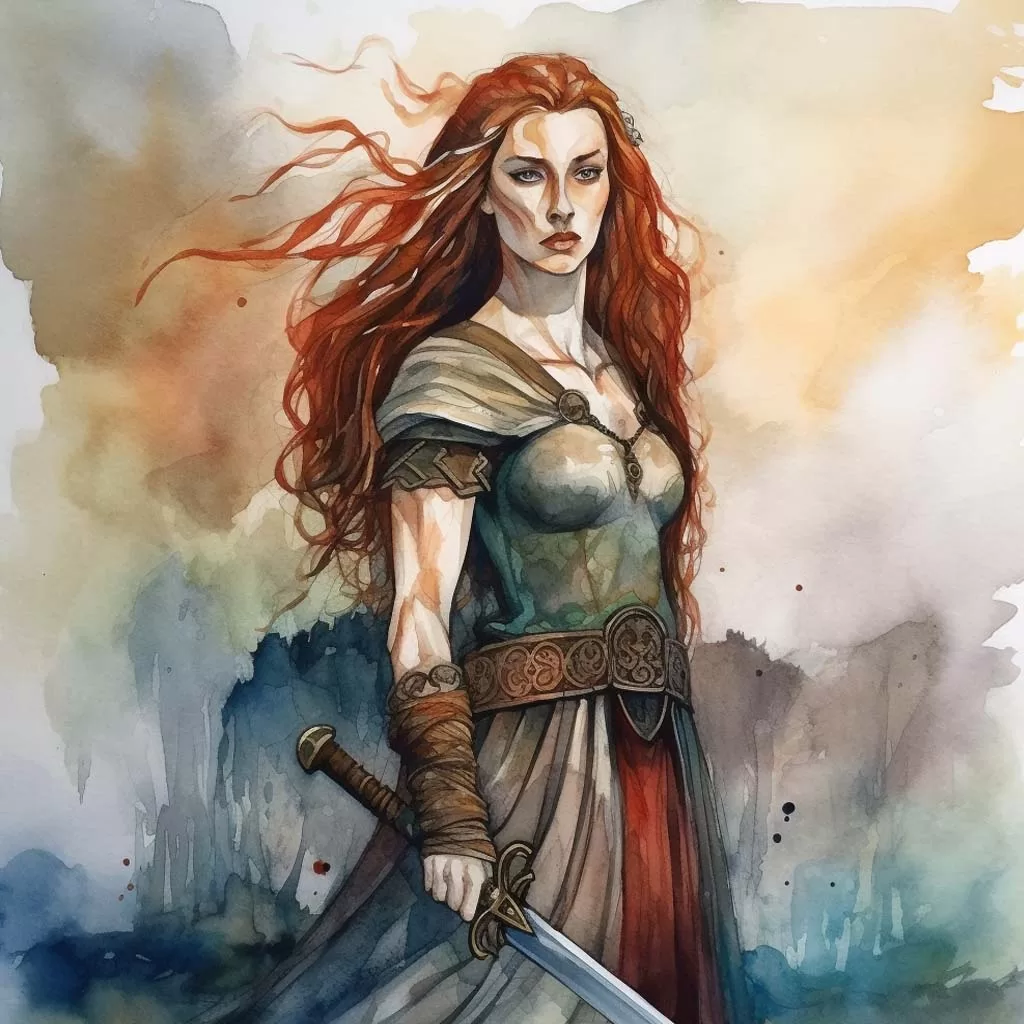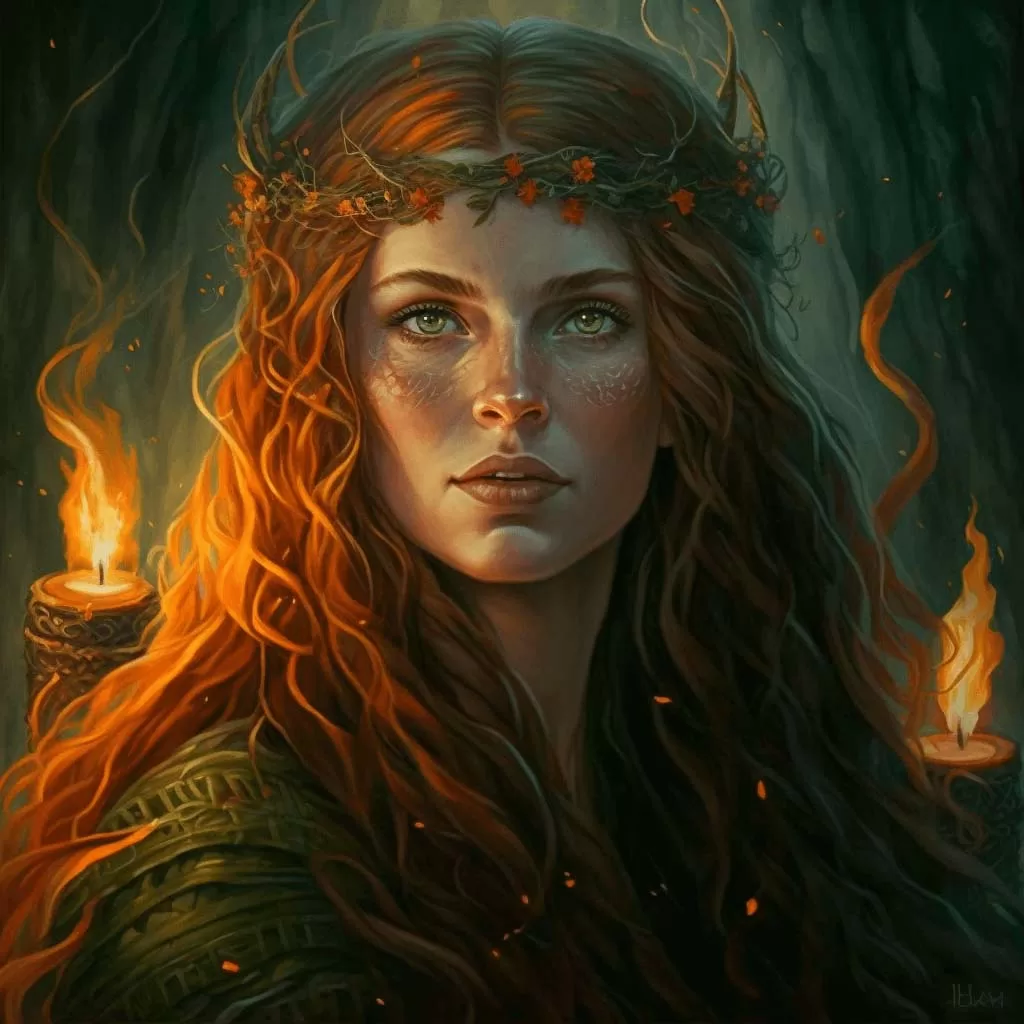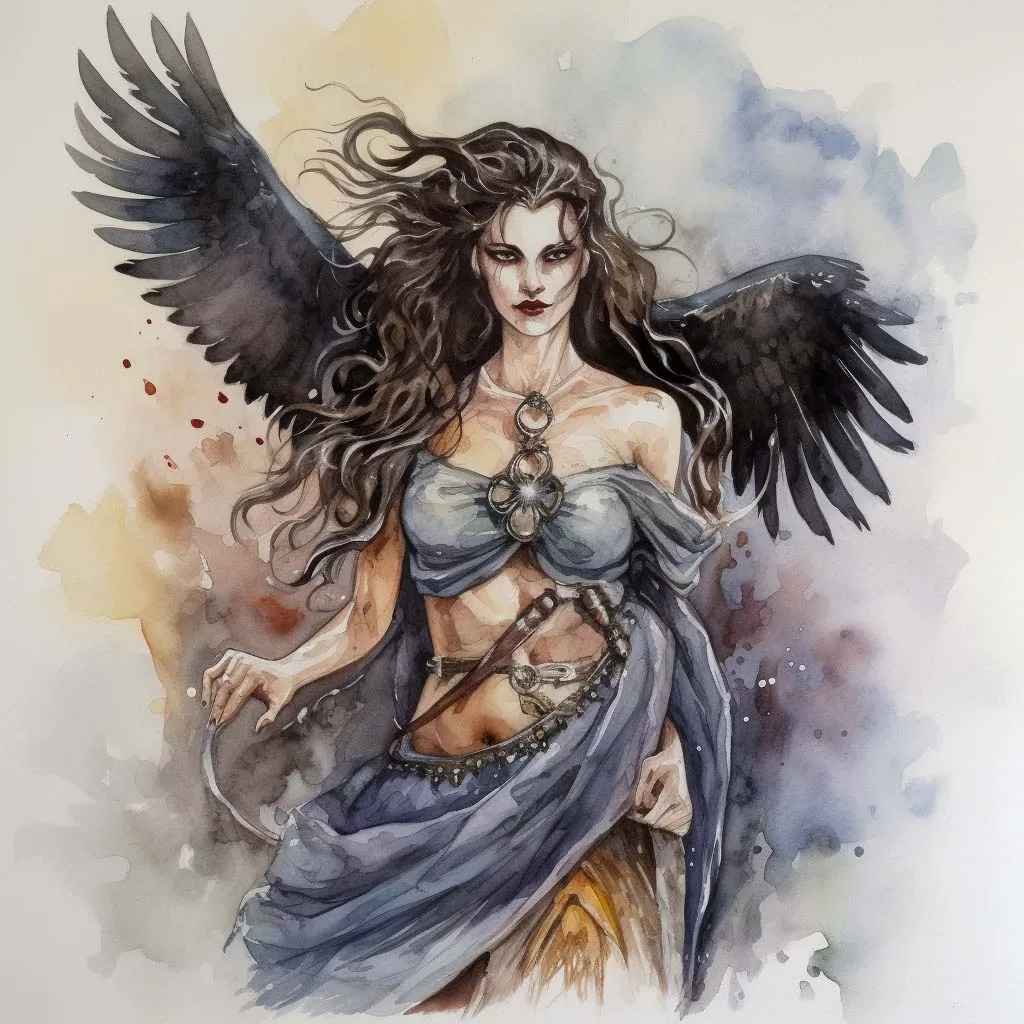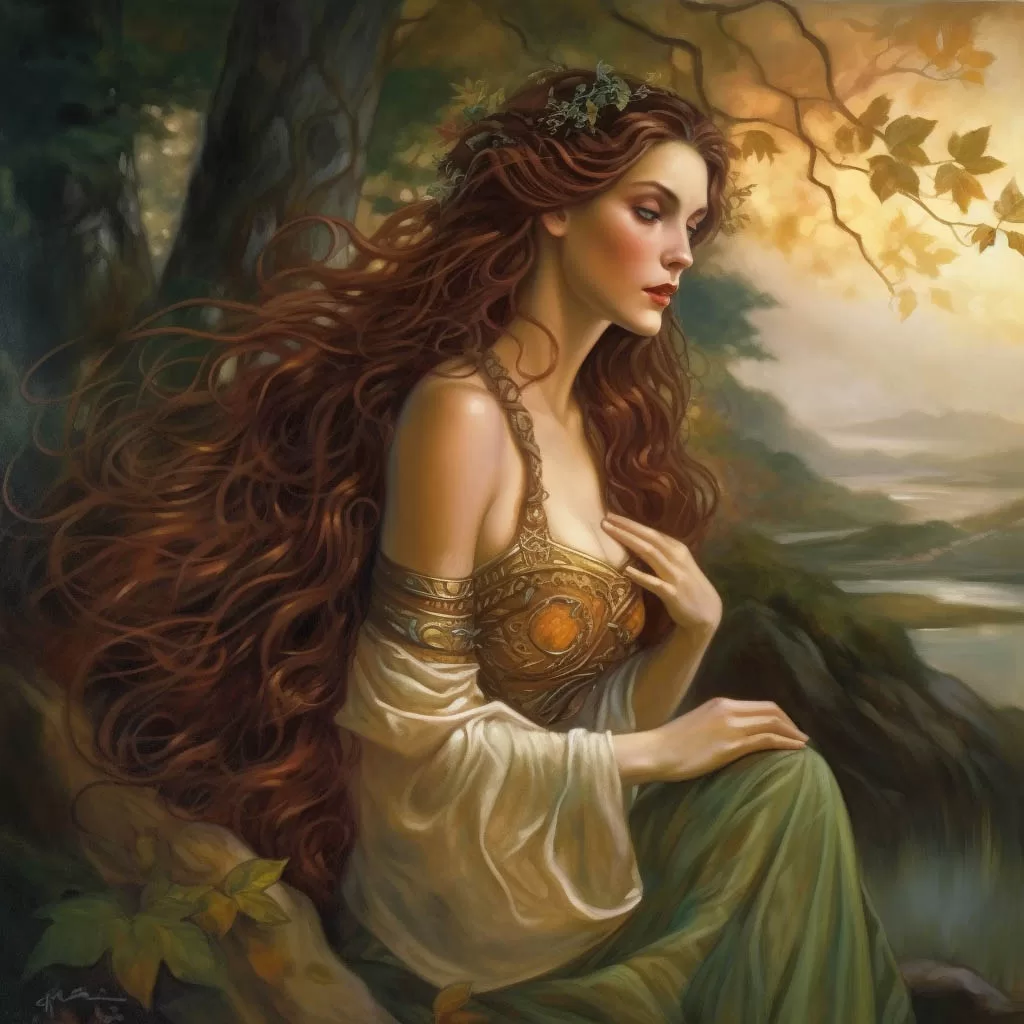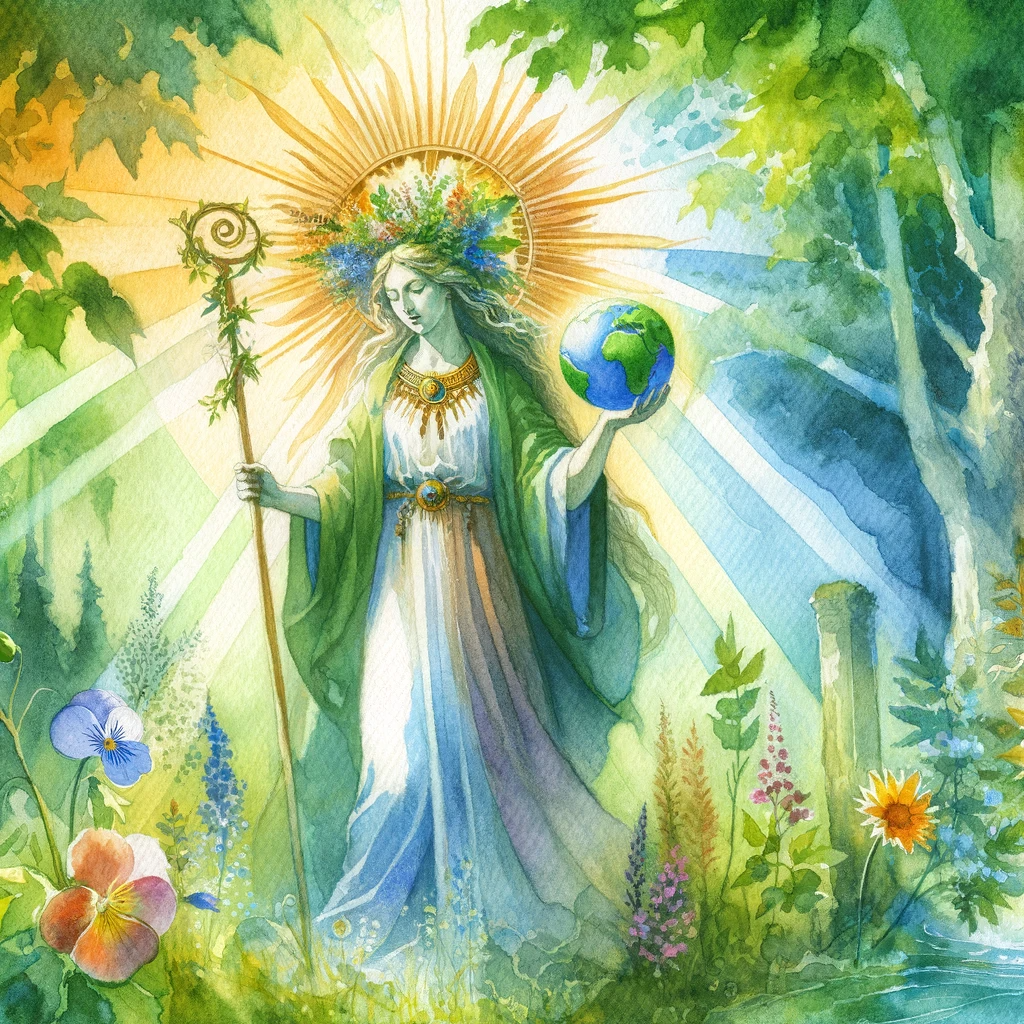Aine, also known as Áine or Anu, is a prominent figure in Celtic mythology as the goddess of love, fertility, and sovereignty. She is revered for her beauty, power, and grace.
| Origins | Festivals | Symbol | Legacy |
She is often associated with the sun and the moon. Aine is said to be the daughter of the god of the underworld, Donn, and is considered one of the most important deities in Irish folklore.
Origins and Mythology
Aine’s origins can be traced back to the pre-Christian era in Ireland, where she was worshipped as a goddess of the land and the harvest. She was also associated with the sun and the moon, and was believed to have the power to bring fertility to the land and to women. Aine was also seen as a protector of cattle and crops, and was often invoked by farmers and shepherds to ensure a bountiful harvest.
In Irish mythology, Aine was said to be the daughter of Donn, the god of the underworld, and was often depicted as a beautiful and powerful goddess. She was associated with the summer solstice, and was believed to have the power to control the weather and the elements. Aine was also said to have the ability to shape-shift into different animals, including a swan, a hare, and a horse.
In Celtic mythology, Aine was often associated with the concept of sovereignty, which referred to the divine right to rule over a territory or a people. She was seen as a powerful and benevolent queen, who protected her people and ensured their prosperity. Aine was also believed to have the power to grant kingship to a worthy candidate, and was often invoked by rulers and nobles to legitimize their authority.
Worship and Festivals
Aine was worshipped throughout Ireland, and was often invoked in times of need or distress. Her cult was particularly strong in the province of Munster, where she was revered as a guardian of the land and the people. Aine was also associated with several sacred sites, including the hill of Knockainey in County Limerick, and the hill of Cnoc Aine in County Tipperary.
The summer solstice was an important festival in honor of Aine, and was celebrated throughout Ireland with feasting, dancing, and bonfires. The festival was seen as a time of renewal and rebirth, when the power of the sun was at its height, and the land was ripe with the promise of a bountiful harvest. It was also believed that Aine would appear to mortals on this day, and grant them her blessings and protection.
In addition to the summer solstice, Aine was also associated with several other festivals throughout the year, including Imbolc, Beltane, and Samhain. Imbolc was a celebration of the coming of spring, and was associated with the goddess Brigid, who was often identified with Aine. Beltane was a festival of fertility and abundance, and was marked by the lighting of bonfires and the dancing of the Maypole. Samhain was a time of honoring the dead, and was also associated with the goddess Morrigan, who was believed to be a close ally of Aine.
Symbols and Iconography
Aine was often depicted in Celtic art and mythology with a variety of symbols and attributes. She was frequently associated with the sun and the moon, and was often shown with a crescent-shaped headdress or a sun disc. Aine was also depicted with animals, particularly the swan, the hare, and the horse, which were believed to be her sacred animals.
Another important symbol of Aine was the apple, which was associated with fertility, abundance, and immortality. The apple was also believed to have healing properties, and was often offered to Aine as a symbol of devotion and gratitude. In some legends, Aine was said to have a magical apple orchard that only appeared at certain times of the year, and was guarded by her supernatural powers.
Aine was also associated with certain colors, particularly green and gold. Green was a symbol of fertility and growth, and was often used in association with the land and the harvest. Gold, on the other hand, was a symbol of wealth, power, and divinity, and was often used to depict Aine as a goddess of sovereignty and authority.
In some depictions, Aine was shown with a wheel, which represented the cycle of life, death, and rebirth. The wheel was also a symbol of fortune and destiny, and was often associated with Aine’s ability to grant kingship and prosperity.
Legacy and Influence
Despite the decline of Celtic mythology and religion, Aine continues to be an important figure in Irish folklore and culture. Her legacy can be seen in the numerous places and landmarks throughout Ireland that bear her name, including the hill of Knockainey and the village of Cnoc Áine.
Aine’s influence can also be seen in the numerous stories and legends that have been passed down through generations of Irish people. Many of these stories involve Aine as a powerful and benevolent goddess, who helps mortals in times of need and ensures their prosperity.
In modern times, Aine’s legacy has been celebrated by artists, writers, and musicians, who have been inspired by her beauty, power, and grace. Her image can be seen in numerous works of art and literature, and her name has been used to evoke the spirit of Ireland and its rich cultural heritage.
Conclusion
In conclusion, Aine is a powerful and important figure in Celtic mythology, revered as the goddess of love, fertility, and sovereignty. Her legacy can be seen in the numerous festivals, symbols, and stories that have been passed down through generations of Irish people. Aine’s beauty, power, and grace continue to inspire artists and writers to this day, and her influence can be felt in the rich cultural heritage of Ireland.
Recommended Reading
Here are some books about the Celtic goddess Aine that you might find interesting:
- “The Ancient Celtic Festivals and How We Celebrate Them Today” by Clare Walker Leslie – This book includes a section on Aine and her role in Celtic mythology and festivals.
- “The Great Queens: Irish Goddesses from the Morrigan to Cathleen Ni Houlihan” by Rosalind Clark – This book explores the roles and mythology of several Irish goddesses, including Aine.
- “Celtic Goddesses: Warriors, Virgins, and Mothers” by Miranda Green – This book provides an in-depth look at several Celtic goddesses, including Aine, and their roles in mythology and religion.
- “The Encyclopedia of Celtic Mythology and Folklore” by Patricia Monaghan – This comprehensive reference book includes a section on Aine and her mythology.
- “The Celtic Myths: A Guide to the Ancient Gods and Legends” by Miranda Aldhouse-Green – This book provides an overview of Celtic mythology, including the role of Aine and other important deities.
- “The Complete Idiot’s Guide to Celtic Wisdom” by Carl McColman – This beginner’s guide to Celtic spirituality includes a section on Aine and her role as a goddess of love and fertility.
- “The Book of Goddesses and Heroines” by Patricia Monaghan – This book includes a section on Aine and her role as a goddess of sovereignty and power.
These books offer different perspectives and levels of depth into the mythology and worship of Aine. Will be a great resource for anyone interested in learning more about this fascinating Celtic goddess.

